Retire No. 21
Twenty years after a Daily News special tribute to the great Roberto Clemente ran, his number is still worn in the majors
Long before the controversy surrounding the Pittsburgh Pirates and PNC Park earlier this month – when the team briefly replaced the Hall of Famer Roberto Clemente’s No. 21 logo in right field with a… wait for it… Surfside alcoholic drink ad – and years before the debate over whether to retire Clemente’s number in perpetuity was the subject of many a sports feature and column, the Daily News published its Clemente magnum opus: a 72-page special section.
Yes, 72 print pages. You’d be lucky to get the editorial green light for a seven-page section today.
The News’ pullout was chock full of features, photos and, of course, ads (not for Surfside though, that didn’t exist yet, but rather full-page ads for products like a Verizon flip phone).
In addition to T.J. Quinn and me, contributions came from heavyweights Mike Lupica, Wayne Coffey, Anthony McCarron and Bill Madden. The section ran in September 2005, piggy-backing off of PR titan Dan Klores’ terrific film, “¡Viva Baseball!”, released around the same time. Our cover paid tribute to Latin players, but the sub-head was all No. 21… with an asterisk.
“21*: *Roberto Clemente is a Latin legend – it’s time to retire his number.”
Twenty years later, the wait continues. Only Jackie Robinson’s No. 42 is never to be worn by a major leaguer again (Mariano Rivera was able to continue wearing No. 42 years after Robinson’s number was retired in 1997 because Rivera was grandfathered in, having been an active player in ’97).
Retiring Clemente’s No. 21 is a debate that probably existed long before 2005, but the Klores film and, to a degree, our special section significantly amplified the conversation at the time, and the discussion continues to this day, although the Surfside imbroglio prompted more ire and “wtf” reactions for ignoring a Pittsburgh icon than anything else. One of Clemente’s sons, Roberto Jr., released a statement that said in part that he was “shocked” to learn of the removal of his dad’s No. 21, and that the “change was made without any communication or consultation with our family.”
Ouch. (Surfside, in its defense, posted a statement of its own on social media, which read in part: “We are in full support of the Pirates’ decision to restore the Roberto Clemente No. 21 logo to its original location.”).
As for No. 21 retired permanently, the News spared no expense for our Clemente special. I was part of a small contingent – along with Quinn and staff photographer Corey Sipkin – that travelled to the Dominican during that 2005 summer, combing the island to talk with former major leaguers, scouts, coaches and prospects. We even tried to book a day trip to Cuba by way of Panama to increase the number of voices in the stories, but that plan proved too costly.
Had it not been for a little event in late August – my wedding – I would have joined T.J. and Corey again during their trip to Clemente’s native Puerto Rico where they interviewed/photographed the Clemente family and the Ciudad Deportiva Roberto Clemente youth complex.
Hall of Famers and (then) current players, Clemente’s former Pirates teammates and contemporaries on opposing teams, even then baseball commissioner Bud Selig weighed in on the Pirates legend and his legacy.
“He was our Jackie Robinson,” said the late Hall of Famer Orlando Cepeda at Cooperstown that summer.
The main feature traced Clemente’s life and career – he was originally signed by the Dodgers and played in their farm system for the Montreal Royals in 1954 before the club placed him on waivers later that year when the Pirates acquired him – how he became a Pittsburgh sports giant, amassing 3,000 hits and winning two World Series rings among other baseball milestones.
“Before I threw the ball I prayed a little bit to God,” said Hall of Fame Dominican pitcher Juan Marichal. “ ‘Please let this pitch be in a good spot for (Clemente) not to hit it too hard… .’ I remember one time in Pittsburgh, I struck him out three times. I think that was the greatest day in my life.”
Clemente suffered myriad indignities throughout his career and life, chief among them vile racism in the U.S., much the same way Robinson’s experience was when he broke into the majors in 1947. There was the story passed down by major leaguers over the years that Clemente referred to himself as a “double” n-word due to his skin color and accent. Some media members during Clemente’s playing days referred to him as “Bob” or “Bobby,” and even some old baseball cards have Bob Clemente for his name.
(Me at the Baseball Hall of Fame holding a baseball card for Roberto Clemente that has a decidedly different and Americanized spelling of his first name)
We had one sidebar in the section devoted to past sportswriters’ clips in which they wrote about Clemente for a story or column. Even the renowned and famously crusty Daily News columnist Dick Young revealed in a column that he was at fault for not understanding Clemente’s accent.
And of course, our section retraced Clemente’s tragic death on New Year’s Eve 1972, when he perished in a plane crash en route to deliver relief supplies to Nicaragua, which had been rocked by a devastating earthquake.
“Major League Baseball should retire Roberto Clemente’s number,” Carlos Beltrán said in Klores’ film.
The Puerto Rico-born Beltrán, a retired major leaguer who played for seven clubs over 20 years, was the recipient of the Roberto Clemente Award in 2013. The honor is bestowed annually to the player who best represents Clemente’s off-the-field values with respect to community service and helping others. Fellow Puerto Rican major leaguer (and Beltrán’s former Mets teammate) Carlos Delgado was also a recipient of the award (2006).
That’s the common refrain in MLB circles regarding No. 21 being retired: Clemente’s legacy is already cemented in the MLB award that bears his name.
“Well, our approach to honoring our greatest players has always been that we try to do something that is reflective of their particular accomplishments,” current commissioner Rob Manfred said in a past ESPN interview. “We do not think we should have a one-size-fits-all approach to honoring our stars.”
https://www.espn.com/video/clip/_/id/17118618
Selig’s response was not a whole lot different in 2005, when the News interviewed him for the Clemente special.
“Roberto Clemente and the Hispanic influence have been enormous and it has been a very positive development,” said Selig. “No question about it. Is it powerful enough that we should think about retiring his number? I really don’t know – that’s something that needs a lot of really serious thought. Like Robinson, what (Clemente) accomplished and what he represents is far more important than just baseball.”
Ironically, the Clemente youth complex which was originally designed to carry out his legacy has never come close to reaching its potential. “Sports City” was and remains the victim of a decades-long family versus government bureaucratic squabble, in addition to mismanagement issues. When the News visited Ciudad Deportiva in 2005, the complex showed signs of neglect and decay all around the 304 acres near the San Juan airport.
If there is any doubt that those problems continue, a 2022 Pittsburgh Tribune-Review long-form feature on Clemente, his family and “Sports City” describes a bleak outlook: “On this day, the property is largely abandoned, overgrown and in ruins,” wrote Tom Fontaine, the feature’s author. “Later in the week, about 15 miles away in Puerto Rico’s ornate Capitol Building just outside the walls of historic Old San Juan, House Majority Leader Angel Matos Garcia would call Sports City a “national embarrassment.” ”
[https://triblive.com/sports/roberto-clemente-keeping-the-dream-alive/].
But Ciudad Deportiva and its challenges is a separate conversation, and one that shouldn’t bleed into the retire No. 21 debate.
Only a few weeks before the Yankees released him in August 2016, Alex Rodriguez was on hand in the Bronx for a ribbon-cutting ceremony at Roberto Clemente State Park. A youth baseball and softball academy was to be built on the site, and Rodriguez had donated $750,000 to the project. A field within the complex was to be named in A-Rod’s honor. Manfred was there too, a still somewhat awkward reunion since three years earlier he and Rodriguez had waged war during the Biogenesis doping scandal.
Credit Rodriguez — and he and I have had our share of awkward interactions over the years — for meeting with the media after the ceremony to offer his opinion on retiring No. 21 (below audio clip). Manfred, meanwhile, ducked out before any reporter could get a comment from him.
“I mean, absolutely. I love Roberto,” said Rodriguez. “What he did for me and many, many others and these kids that are here today, he paved the way for guys like me and he was one of my heroes. He’s an incredible player and even a better person.”
There seems to be little argument on either of A-Rod’s observations, but meanwhile, No. 21 has yet to be retired, and sadly, the number is in the spotlight more recently for all the wrong reasons.
You deserve better, Roberto.




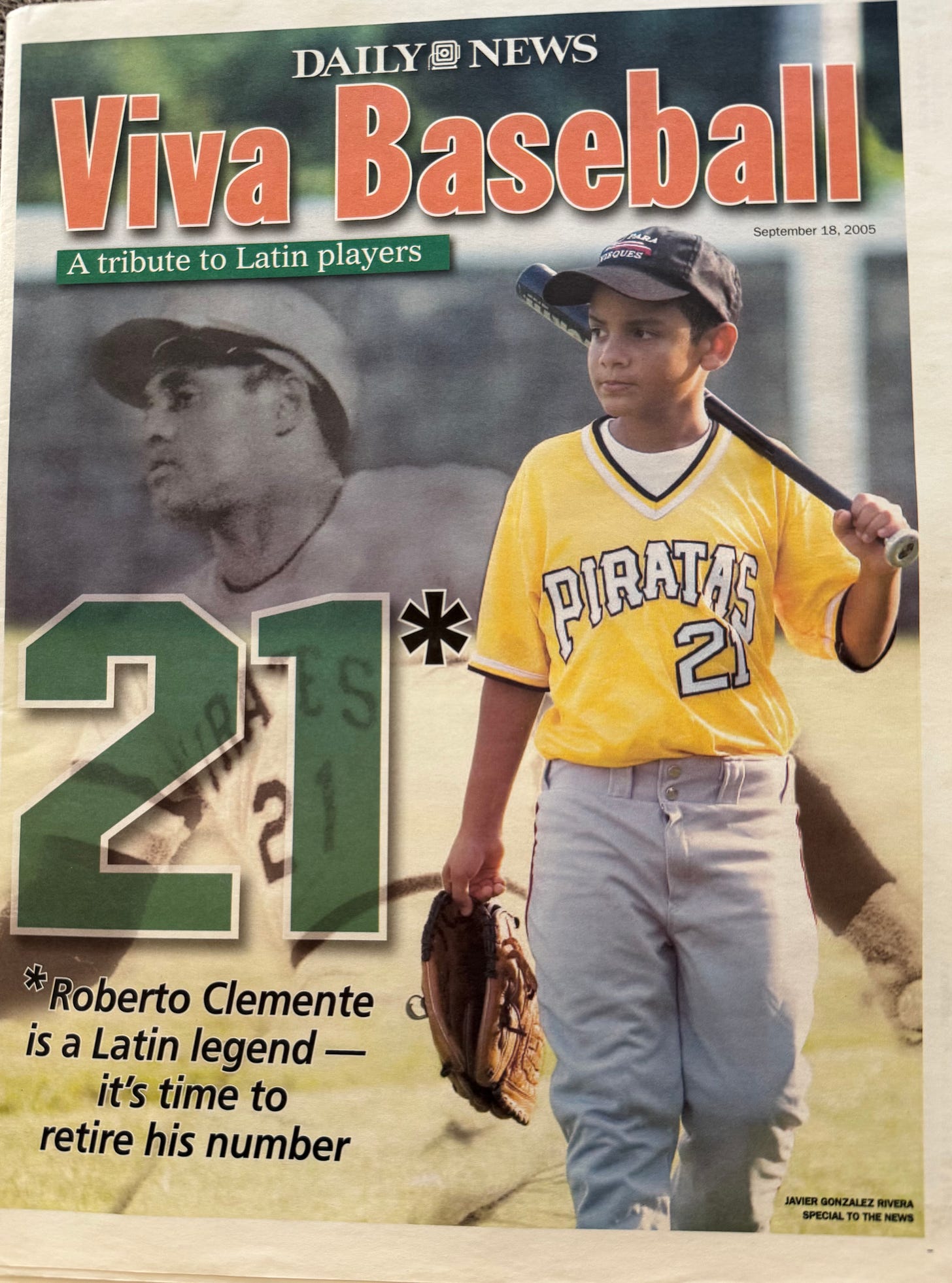
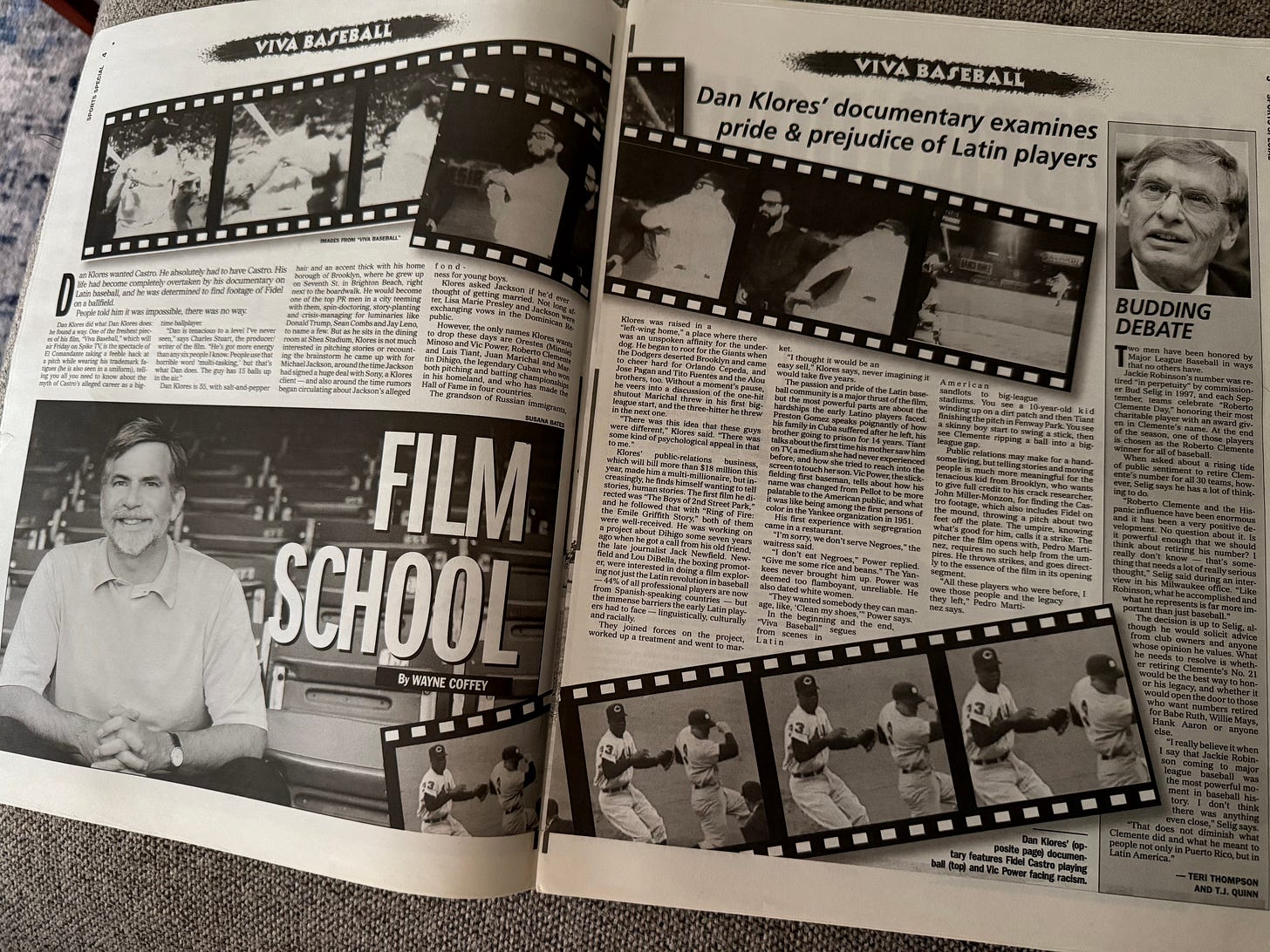
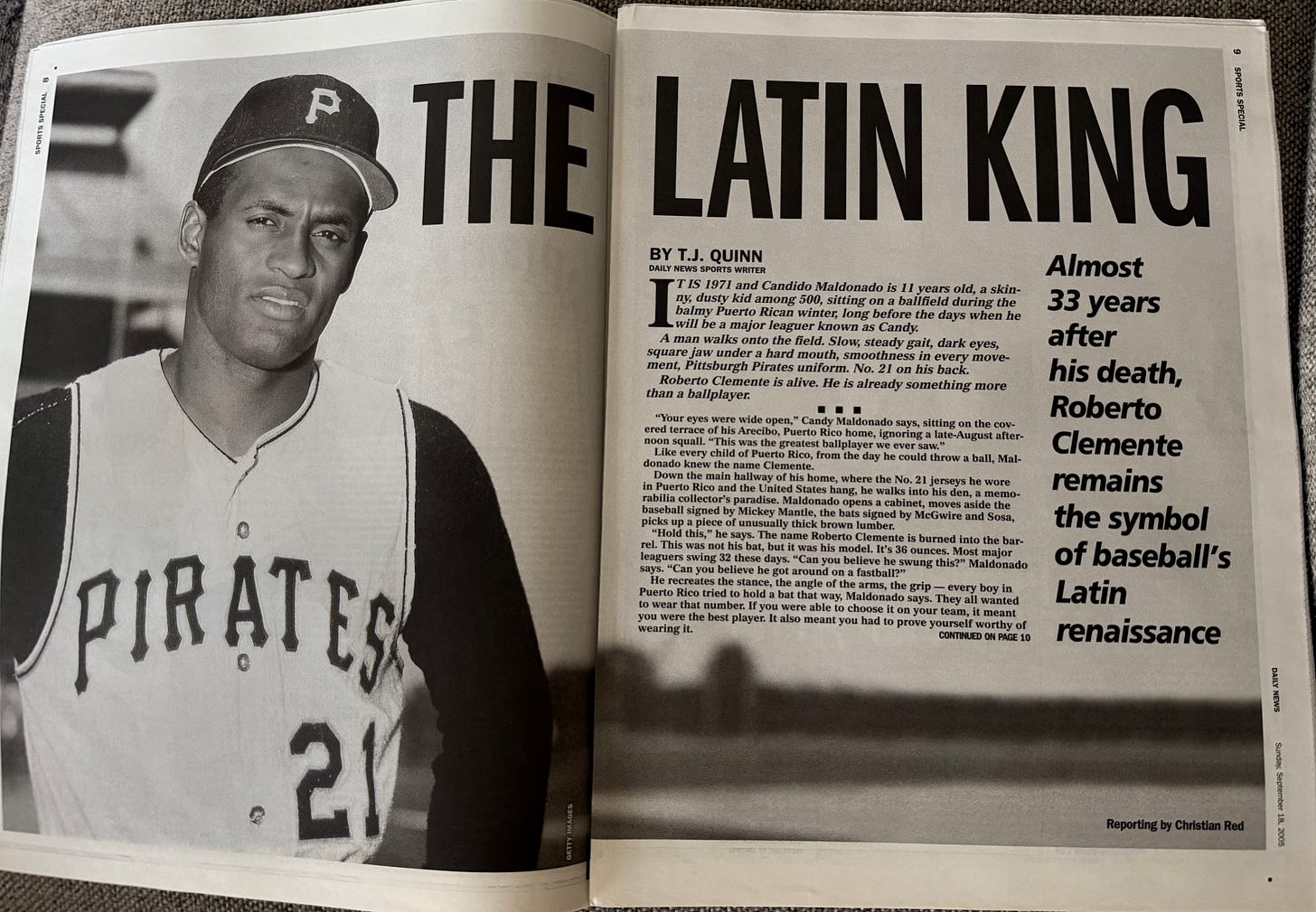
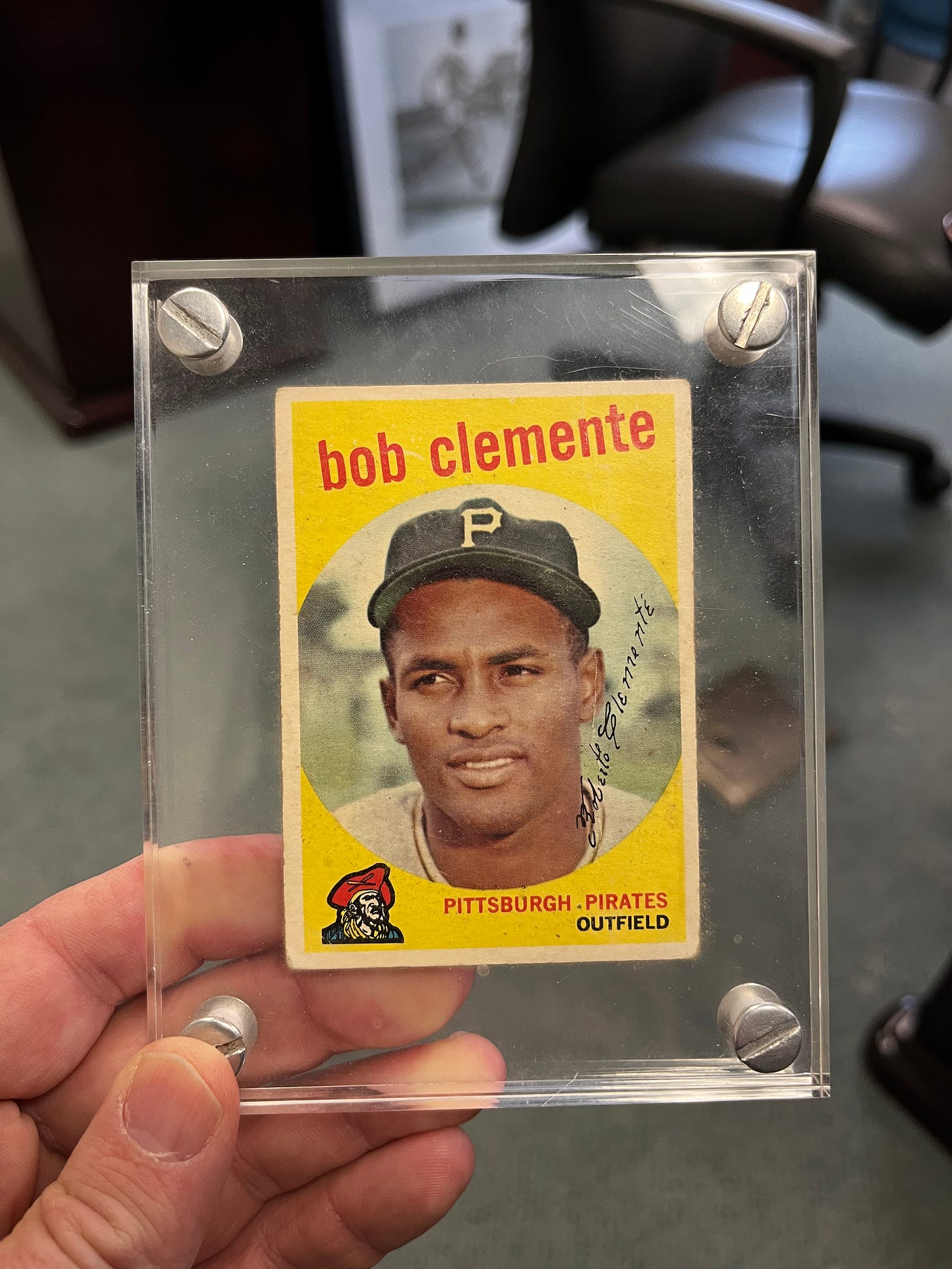
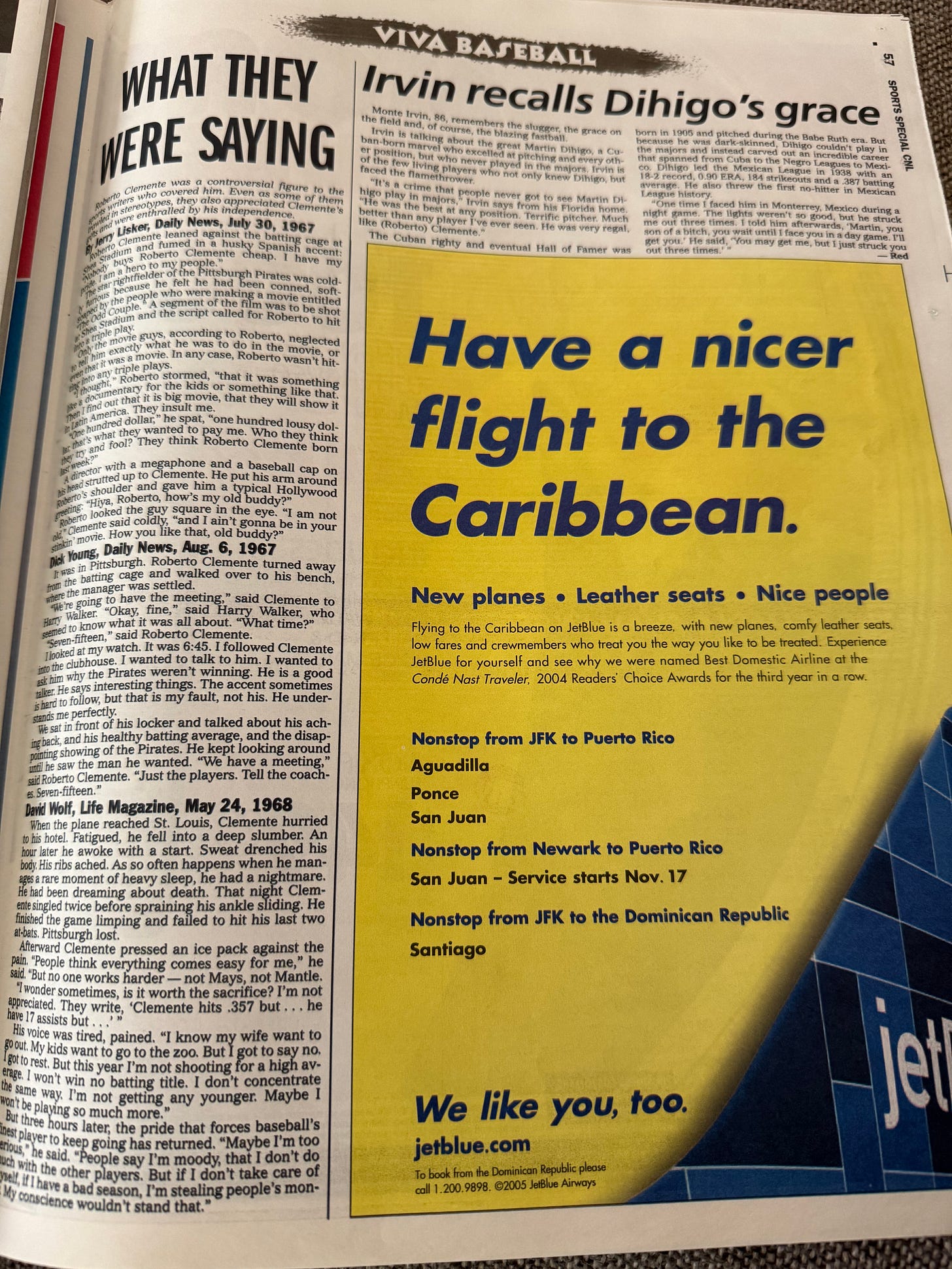

Very insightful and thoughtful story. My only quibble is calling your wedding “a little event.” As an eyewitness to the event, it was a smash!